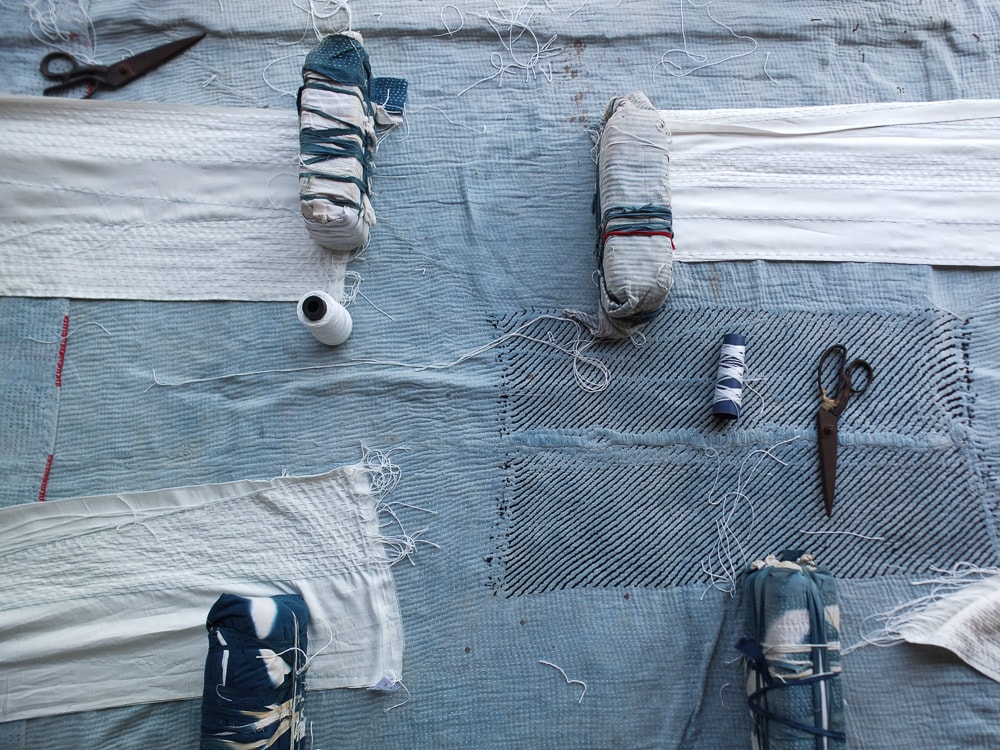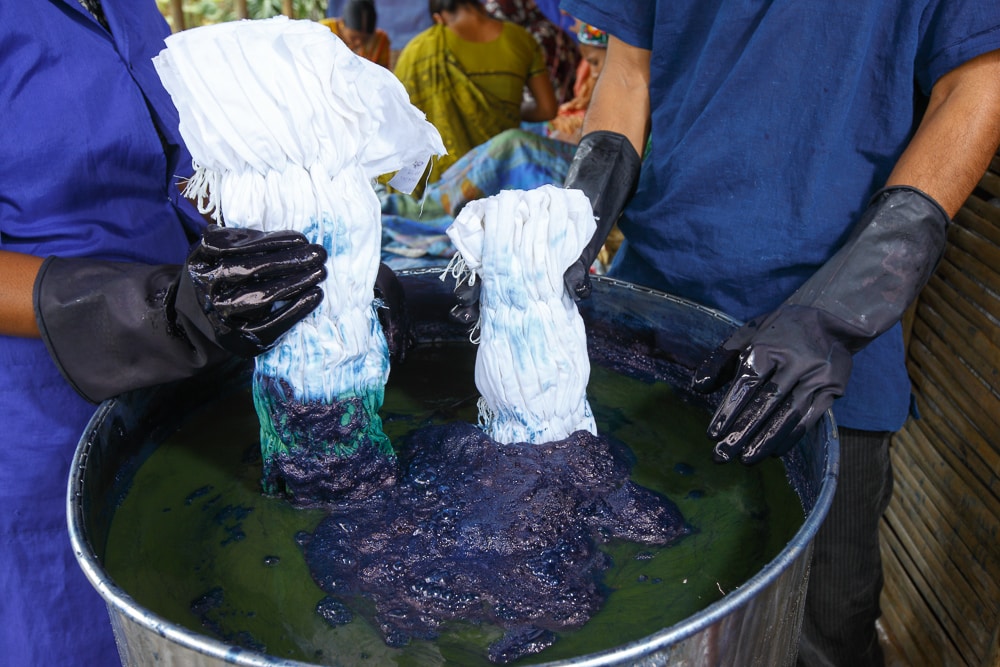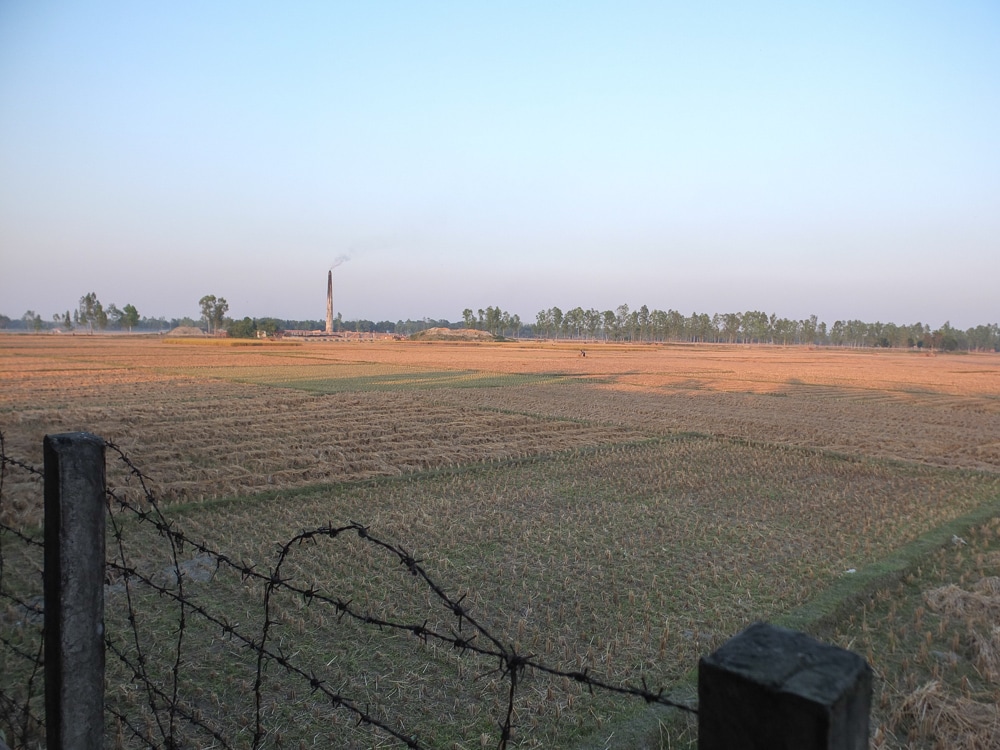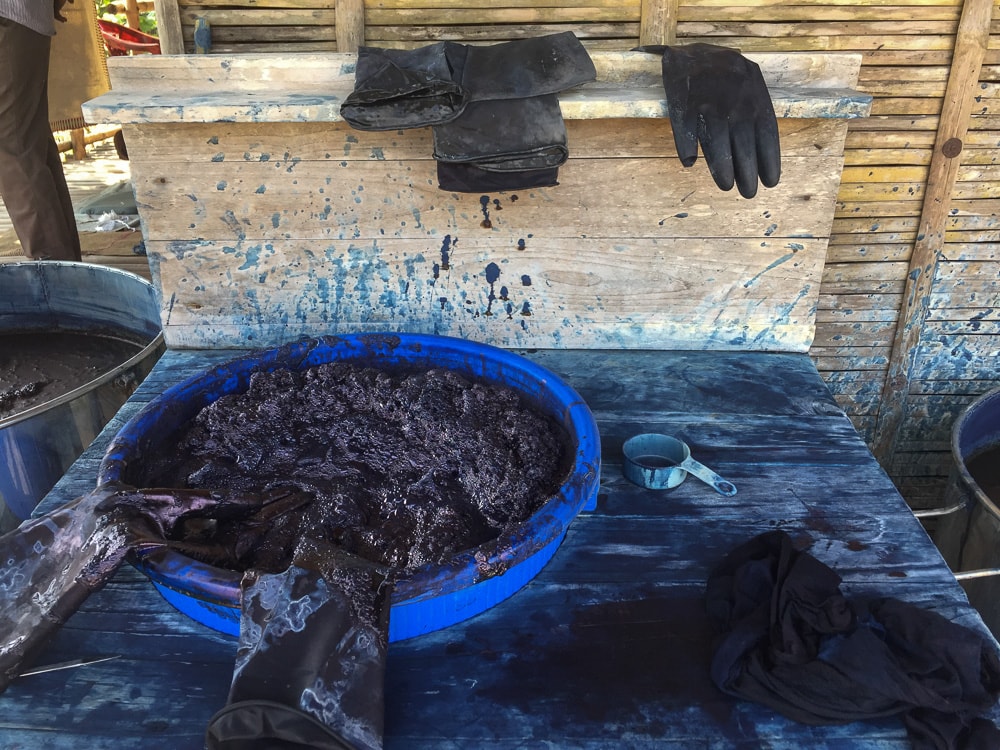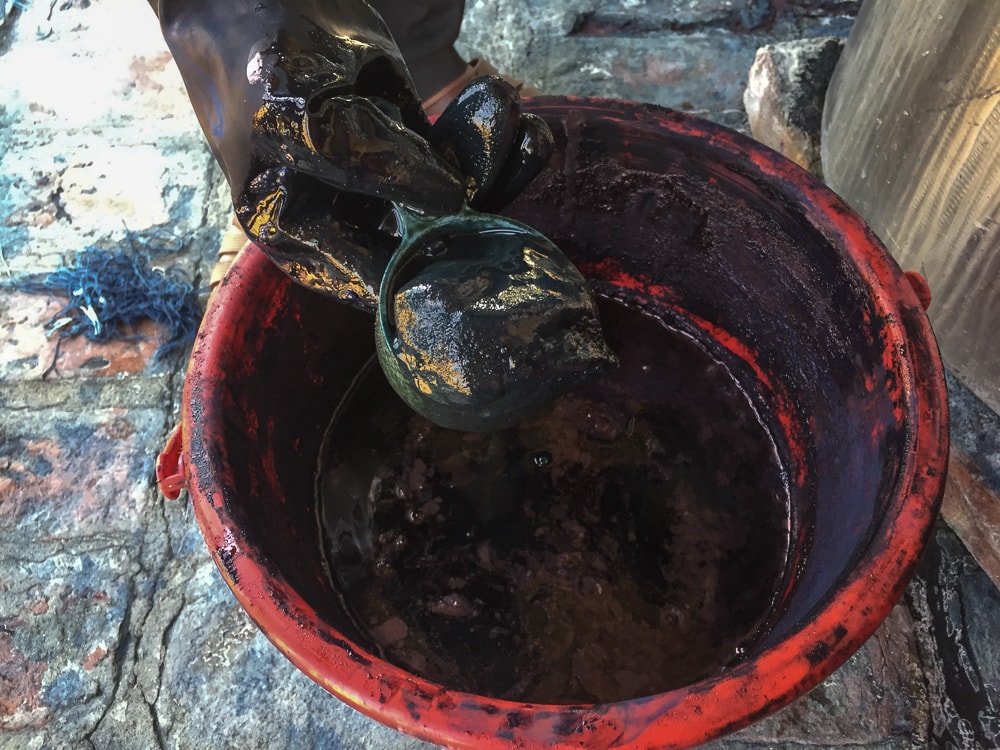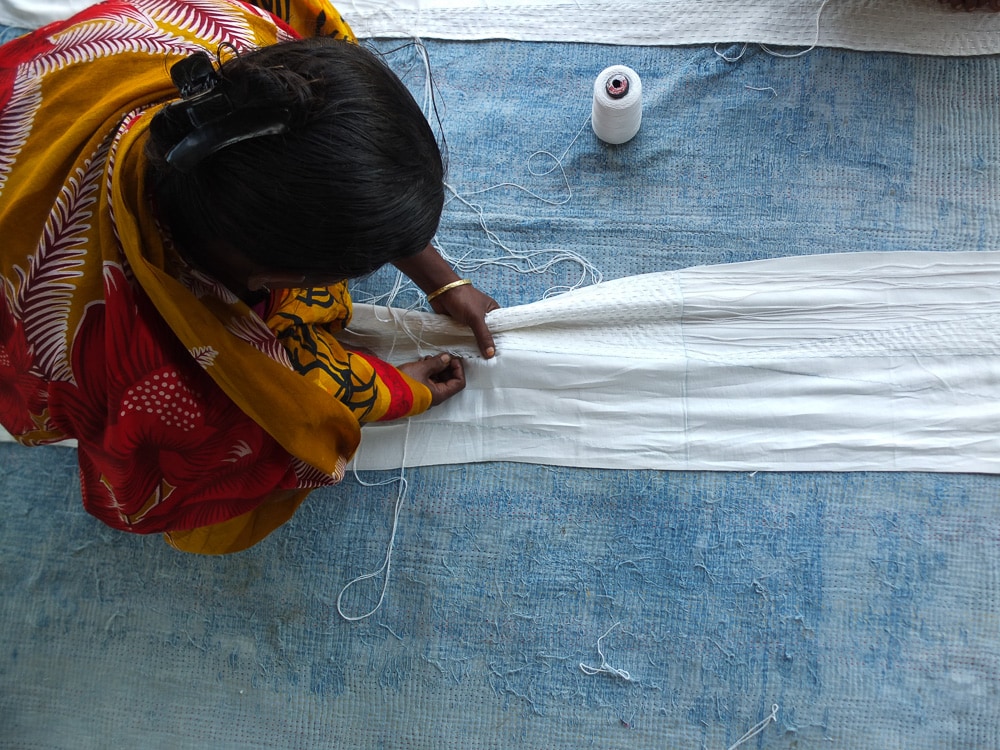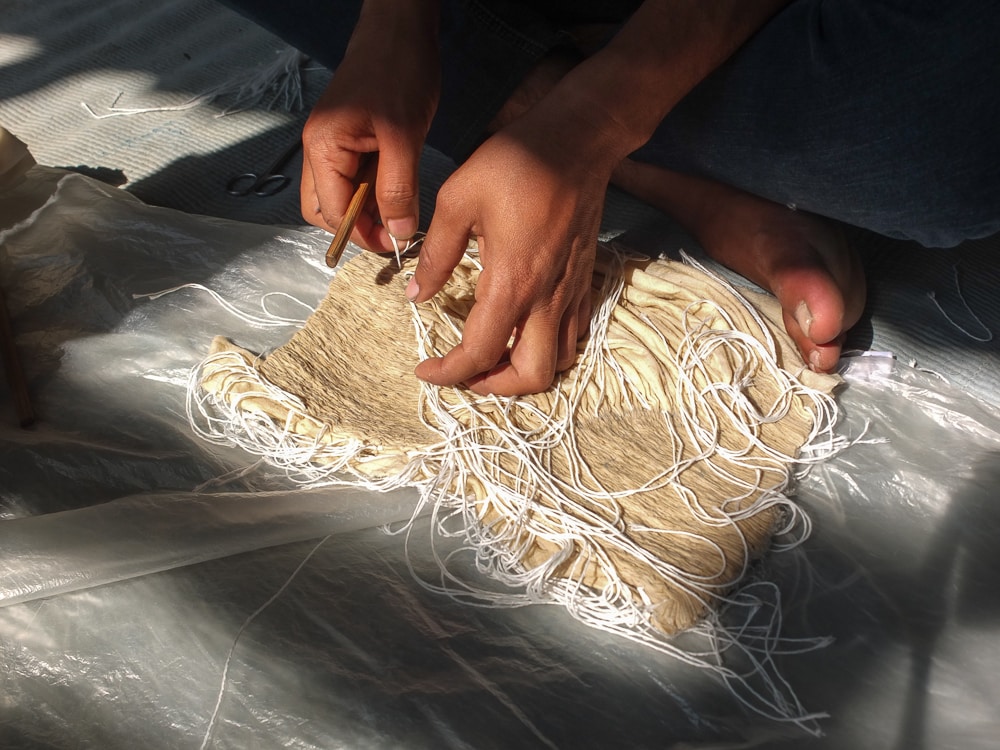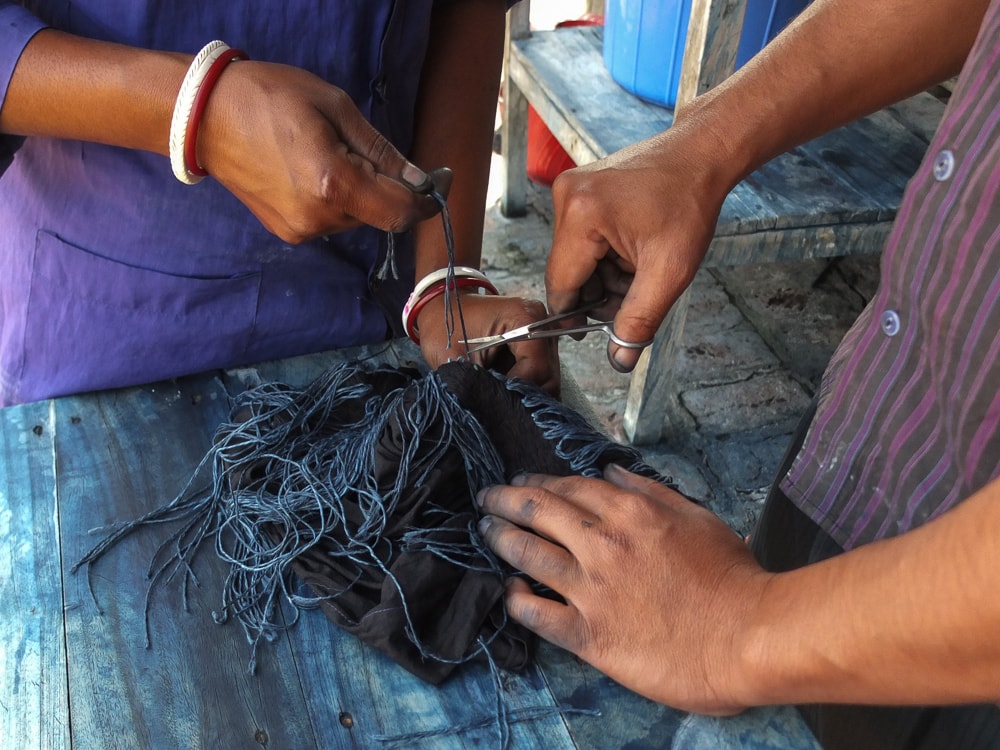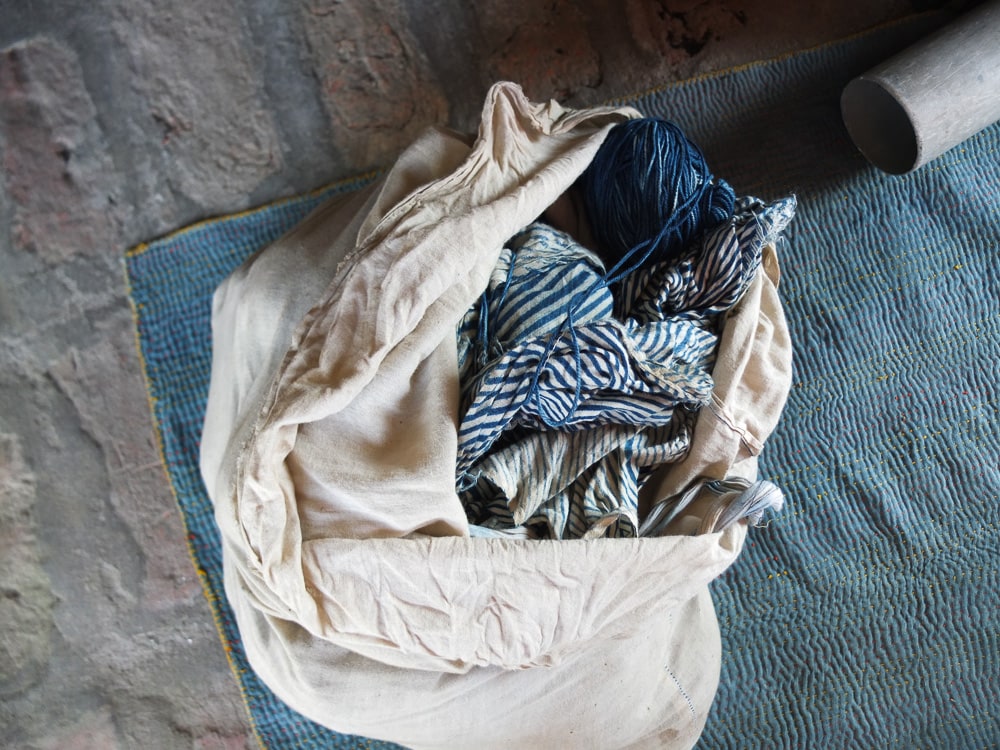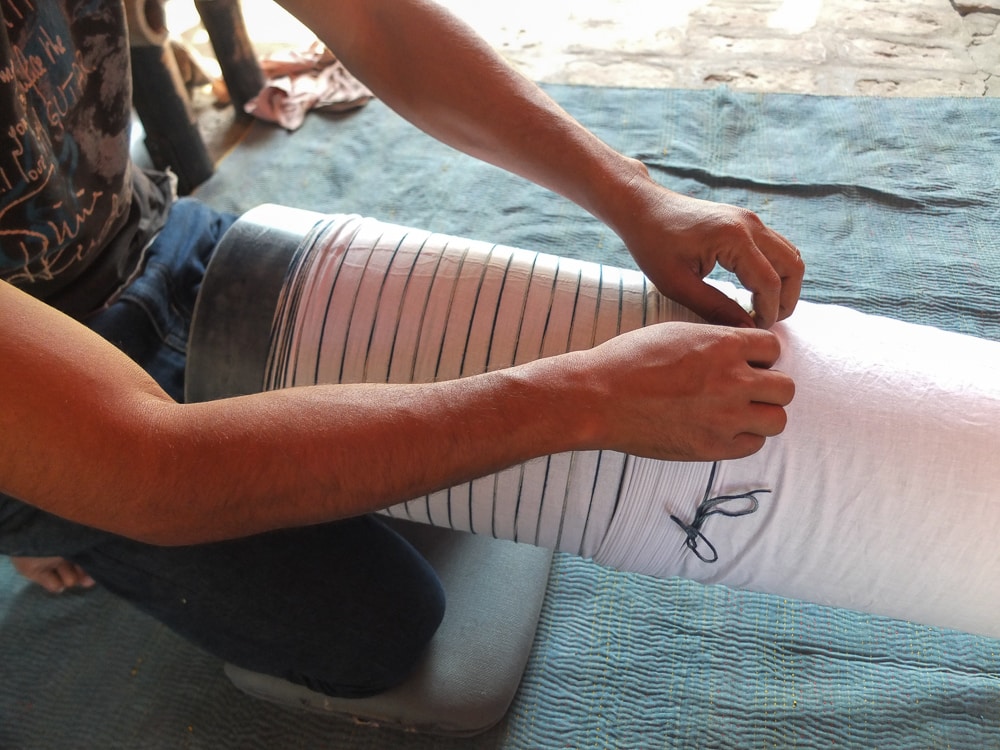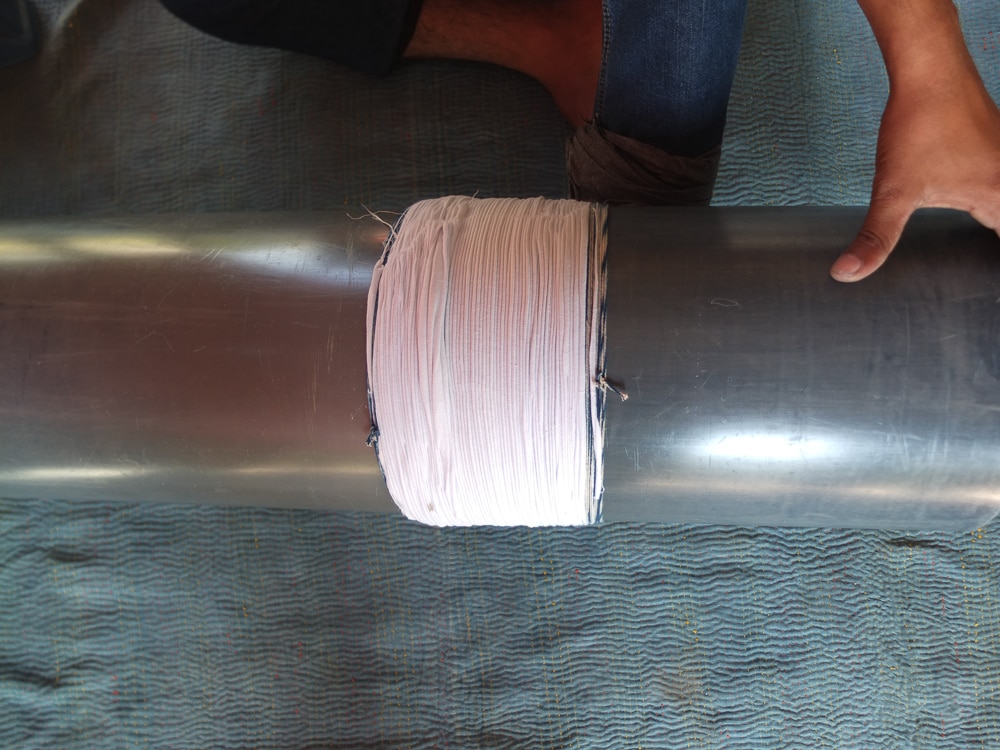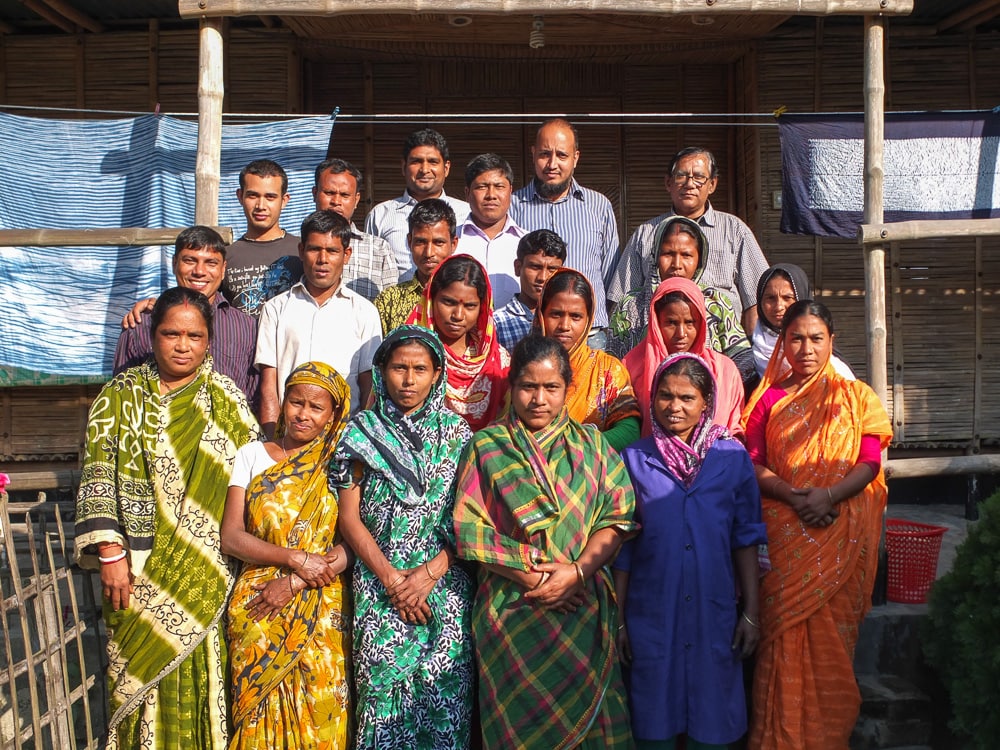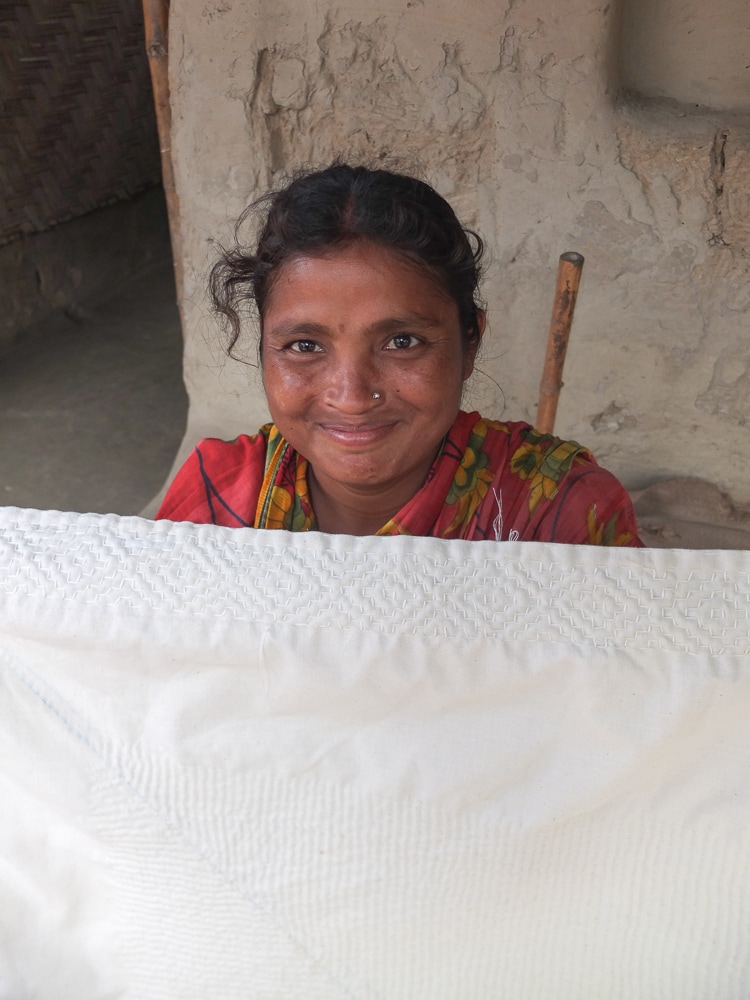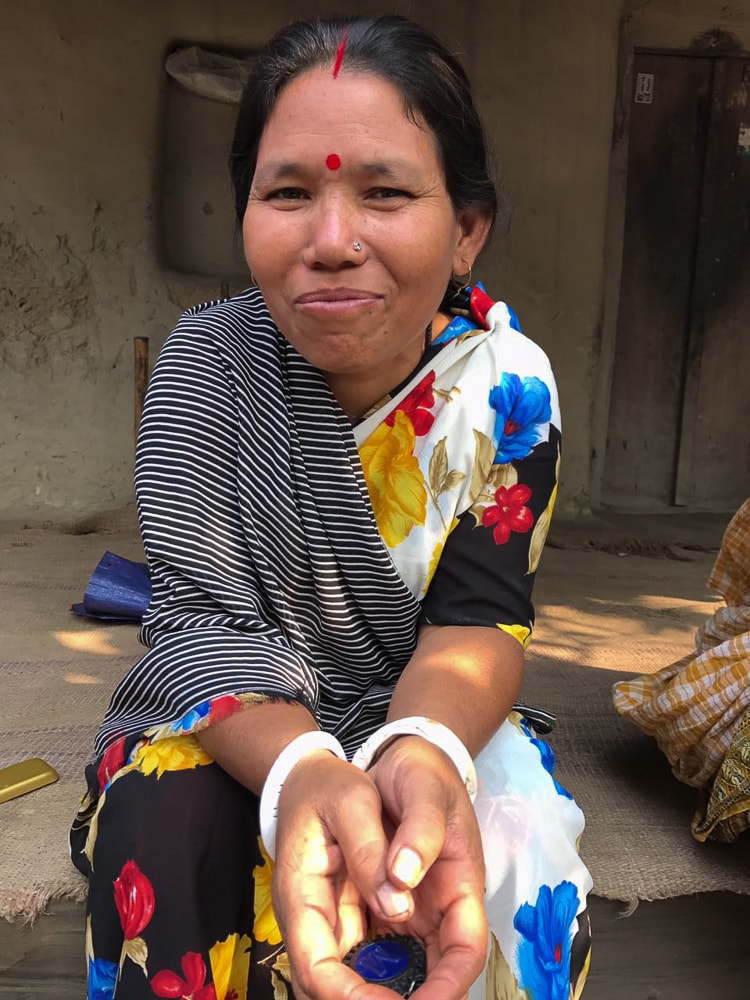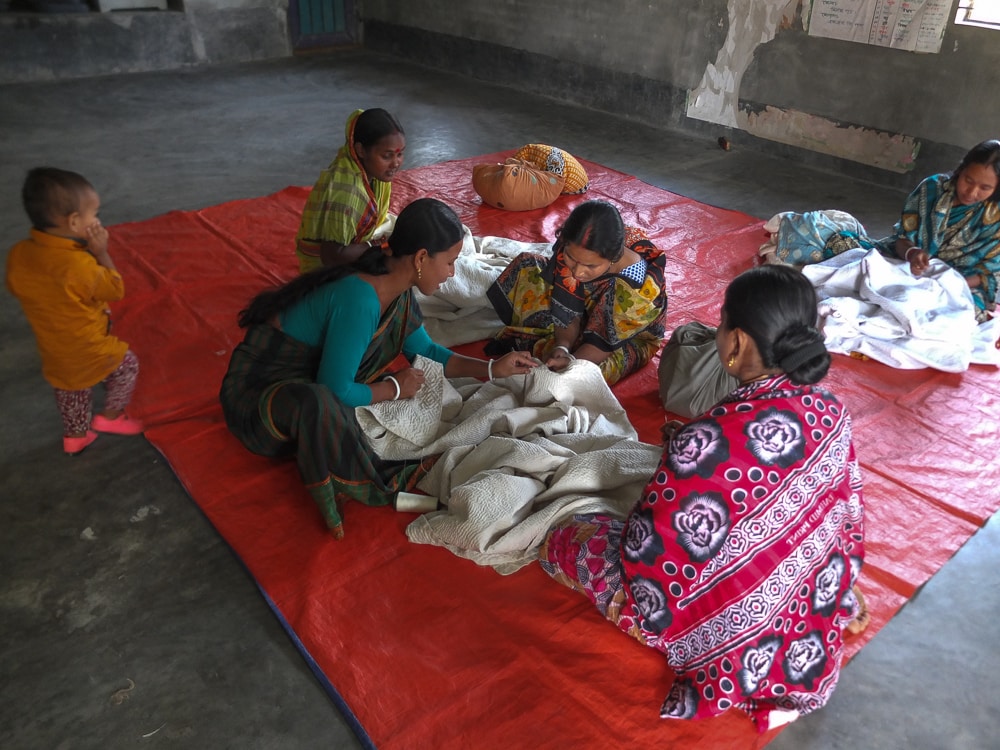Bangladeshi micro-brand Living Blue combines traditional craft technique and creative design collaboration with a community-driven mission. The warm-hearted team working in Rangpur makes a range of products – from shibori-dyed textiles to hand-stitched kanthas – for high-end markets. Artisans work together to run the business earning fair wages. Profits made through indigo farming, dyeing, and quilting are totally under their control, free to be reinvested in the communities where they work.
Contributor Sharon de Lyster of Narrative Made recently visited the Living Blue workshop in Rangpur to take a deep dive into their techniques for THE KINDCRAFT.
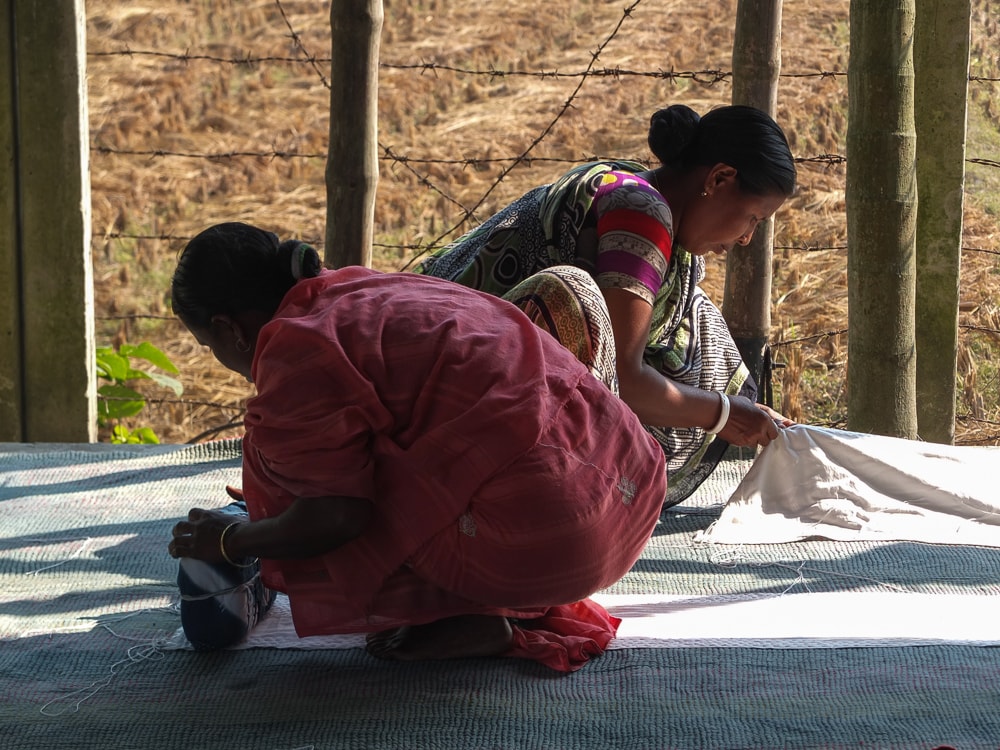
Natural indigo dye
Indigo growing and dyeing has a long history, particularly since the days of British indigo trading in Bangladesh (learn more about Bengali natural dyes in this conversation with Ruby Ghuznavi).
With a carefully planned and sustainable production cycle, Living Blue’s indigo initiative is synchronized with the agricultural cycle. After indigo plants are grown, harvested, and fermented through the dye-making process, their fermentation discharge is used to replace chemical nitrogen fertilizer to help new crops grow. Indigo and other natural dyeing is done in-house by a team at the Living Blue workshop who works hand-in-hand with the shibori artisans. This partnership allows for a thriving creative process.
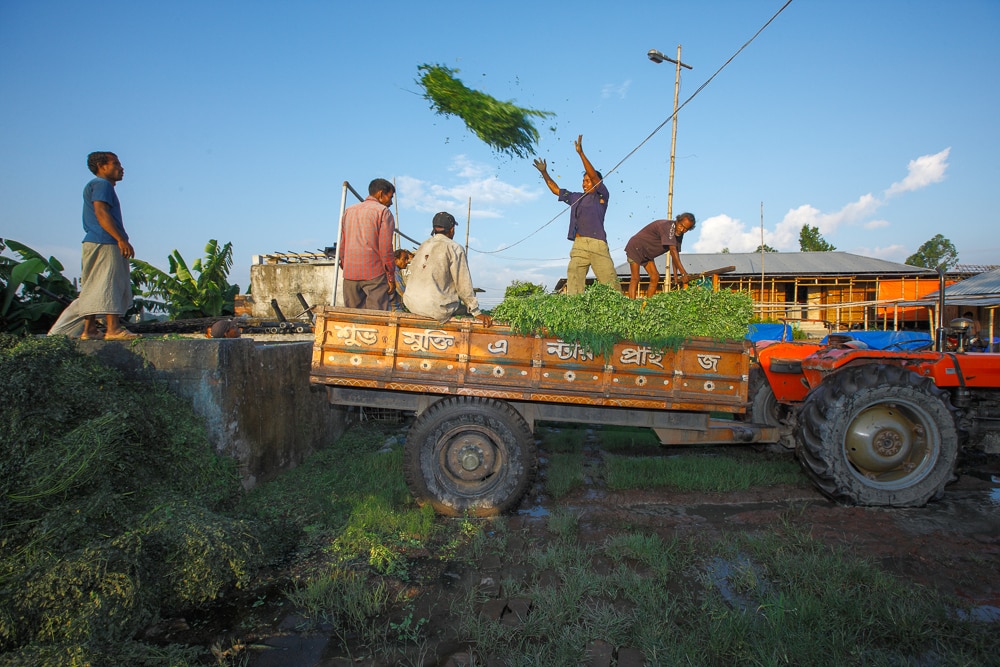
Shibori & Arashi
The magic of shibori (Japanese-style tie dye) is the endless number of patterns and effects that can be achieved through free-form stitching, compression, and dying. At the Living Blue workshop, women prepare shibori textiles using white fabric, 3 inch long needles, a pair of strong hands, and flawless stitching skills. Their pieces are then passed onto the dyers for tightening and indigo dyeing.
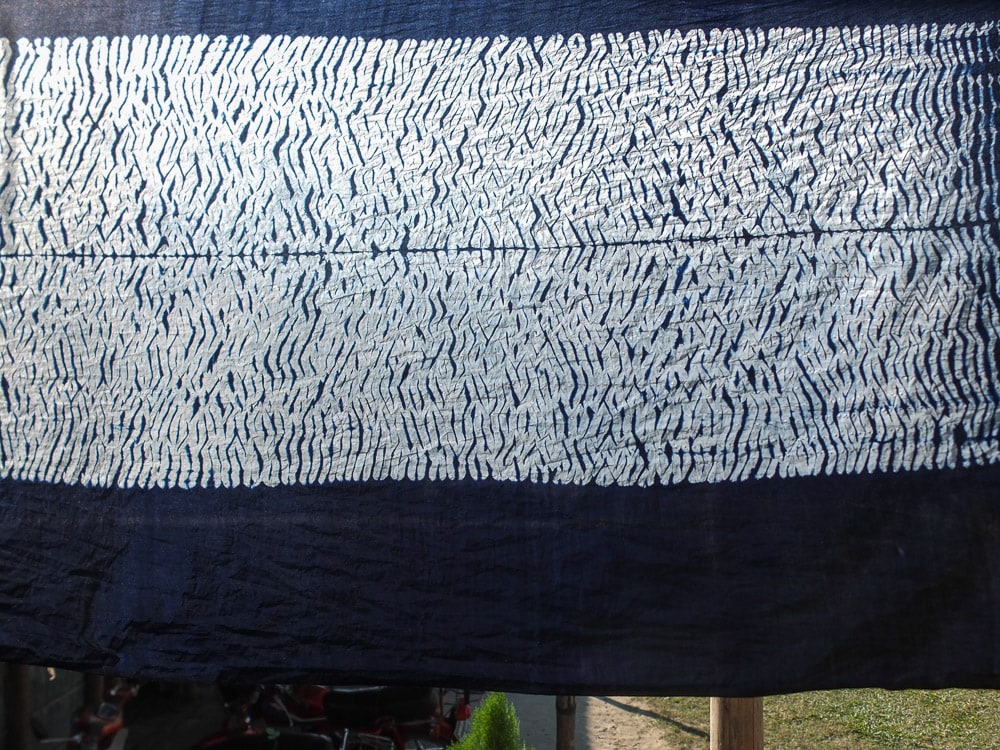
Living Blue also practices the craft of arashi. This technique is achieved by tying and wrapping fabric on a tube, resulting in a striped pattern on the surface of the textile. The team develops a diverse range of products with the combination of shibori and arahi, from scarves and stoles to home textiles.
Hand Quilting
Unlike shibori and indigo-dyeing techniques unique to Living Blue, white-on-white hand quilting is practiced throughout the entire region. The ladies in Chirirbandar are the makers of our Narrative Made Dheu Quilted Scarves. The dheu, or “wave”, is a ripple pattern created by using increasing layers of khadi handloom fabric and the application of jod and bejod kheta.
Sona Rani Roy (above, left) is a master quilter and the director of the regional cluster of quilters. She invited us into her home for an amazing feast and shared her personal story. She told us that by working at Living Blue, she was able to expand the size of her home by 4 to 5 times its original size, making use of land that she previously couldn’t afford to build on.
Behind the smiling faces at Living Blue are stories of women striving to use their skills to find success and provide for their families. Sona recently achieved international recognition by becoming one of 26 finalists for the 2017 Loewe Craft Prize for her White on White – Moyer’ quilt. The Spanish luxury house received 3,951 global craft submissions and will announce the winner on April 10th, 2017.
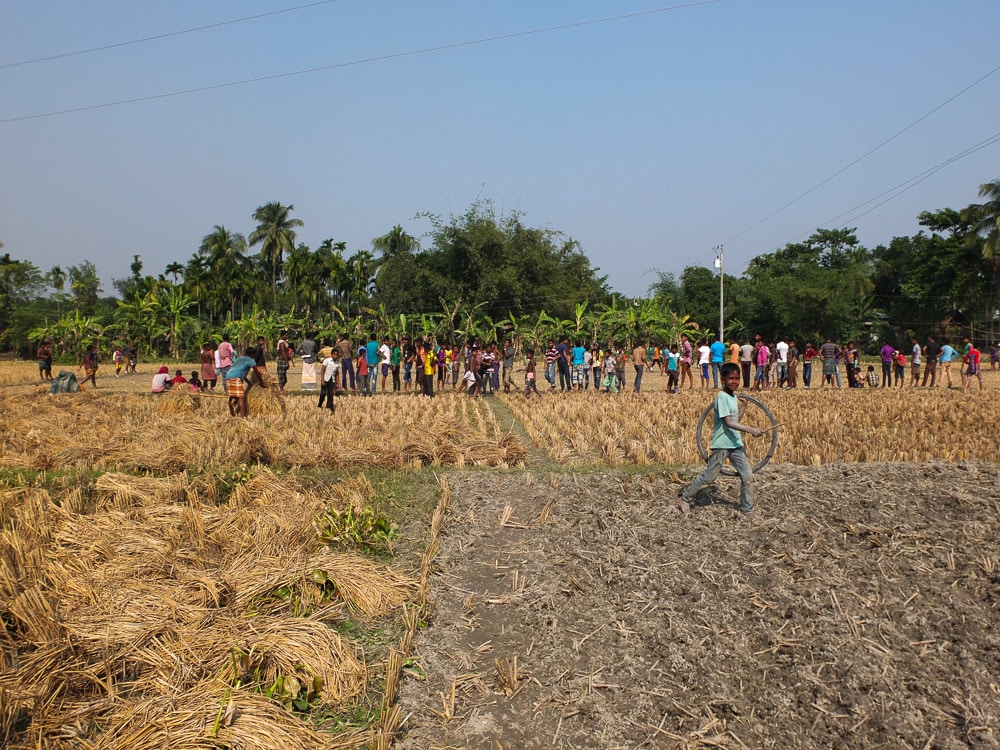
Near the end of my trip, I came across a kids’ football match. These happy children reminded me that buying quilts from the village’s women is about more than just preserving their heritage crafts: It’s also about giving woman an opportunity to provide for their families and contribute to the next generation. It’s our hope that these kids have access to safer shelters, less financial stress, and mothers staying at home to work. Living Blue provides us with a way to contribute to the makers’ whole community in this beautiful, remote part of Bangladesh.


